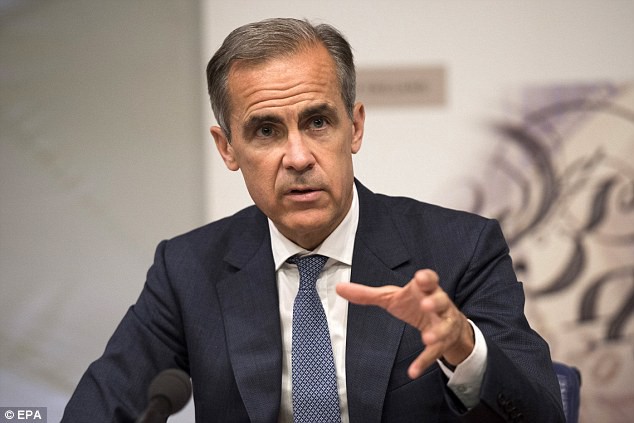Will the inflection become a disruption? | Ben Scheltus
Mark Carney, the Chair of the Bank of England made an important speech in Amsterdam recently. He was attending a gathering of his counterparts that met to discuss the challenges presented by climate change.
His speech was called “A Transition in Thinking and Action”. He maintained that there has been a substantial shift in the way the finance community thinks about the risks presented by climate change and this change in thinking has resulted in action. He ended his speech by saying: “The tragedy of the horizon can be resolved in an orderly, effective and productive manner, however, with early transitions in thinking and action."
Andy Grove, Intel’s co-founder famously described a strategic inflection point as “an event that changes the way we think and act”. Inflection points can be a result of action taken by a company, or through actions taken by another entity, that has a direct impact on the company. Additionally, inflection points may be caused by international action or by unforeseen events.
A market disruption is a situation where markets cease to function in a regular manner, typically characterised by rapid and large market declines. A market disruption often occurs as a result of an event or group of events that are widely perceived as economically detrimental. The anxiety becomes contagious, causing both investor confidence and consumer confidence to fall. Recent examples of market disrupters are: Uber entering the ride share market, AirBNB for hotels, Amazon on bricks & mortar supermarkets, Tesla’s impact on the car industry and renewable energy’s impact on coal fired power.
We are currently facing an inflection in the finance market that is being driven from three directions:
1 In order to avoid a market disruption in the EU finance market, policy makers are energetically promoting a more effective and transparent method of disclosing the risks resulting from climate change. Chairs of a number of influential Reserve Banks have recently re-iterated their intent to change the way financial entities disclose and manage risks. They know that for markets to do what they do best – allocate capital effectively and dynamically – they need the right information. When risks are unknown or ill-defined, the market cannot allocate resources in an efficient and profitable manner. The policy maker’s goal is to help the industry manage the inflection.
2 The WEF Global Risks report published at Davos in February this year categorised five (of the top six) major risks emanating from climate change. When a powerful and authoritative group identifies risks in this manner, it pays to listen. Many of these risks will impact the finance industry – particularly insurance. Directors should pay heed and have a clear understanding of the risks identified and develop mitigation strategies.
3 Most countries are facing an inflection point in their energy markets – particularly in power generation. The transition towards renewables and battery technology has resulted in early adopters making investment decisions that will result in changes to the market that may happen faster than expected.
Readers need only consider the pressure the AGL board has recently experienced, to appreciate what may be in store for other firms. Laggards unwilling to change may end up owning stranded assets or have others limit their options.
Electricity supply is fundamental to the operation of a successful economy and one way or another – all Australian businesses will be impacted by this transition.
So what’s it going to be – an inflection or a disruption?
Chaos Theory in Action | CEAG Liz Bossley
The overhaul of the regulatory regime for financial instruments, including commodities, since the banking crash of 2008 constitutes a lot more than the archetypal “butterfly flapping its wings” of chaos theory. So we should not be surprised to see far-reaching and unintended consequences in the market from the flapping of the weighty Dodd Frank and EMIR/MiFID wings of legislation.
NAB's path to carbon neutrality
The basics of climate change
The term “climate change” refers to changes in long-term trends in climate that have been caused by human activity. Since the Industrial Revolution, the extensive burning of coal and petroleum has resulted in large amounts of carbon dioxide being emitted to the atmosphere. Extensive land clearing has had similar results.
Climate change for board risk committees
Climate change is emerging as one of the most significant risks facing the Australian economy. Increasingly, shareholders, younger employees and investment managers are asking companies about their policies around climate change. Prudent, long-term planning is essential to mitigate its adverse impacts and exploit the opportunities presented by the new environment.
Carbon in the supply chain
Existing supply chain management practices have traditionally focused on cost, service and quality. The new requirement to manage carbon emissions has resulted in carbon being the fourth criteria. With the possibility of a price on carbon, new opportunities arise for companies to exploit a competitive advantage by effectively managing carbon in the supply chain and to work strategically with their suppliers.
Carbon Pollution Reduction Scheme (CPRS) background
The legislation for the CPRS was rescinded by the Abbott Government in 2014, but we provide this information for historical purposes. The Rudd Government proposed an emissions trading scheme in 2008 as its central policy response to persuade Australian businesses to reduce their greenhouse gas emissions. The scheme is based on a cap and trade system.
Efficiency Improvements
Many major organisations in Australia require large amounts of energy to operate. Those involved in power generation, smelting and manufacturing consume the most energy. Substantial opportunities exist for organisations to reduce the expenditure on energy through the introduction of energy efficiency improvement programs.
Enlisting Champions
New sustainability initiatives introduced into organisations require clear communications and energetic support from all levels of employees. This article explores the benefits of enlisting individuals within organisations (known as Champions) who can enthusiastically support and lead initiatives to bring about changes in company thinking and enable organisational change. These Champions emotionally and materially support ideas and projects and will sell these ideas to both the company and to the wider public.
Reducing your carbon footprint
The term “carbon footprint” refers to the amount of pollution an activity generates. It can be ascribed to a manufacturing, a service or a transport activity – or to an individual. It is typically measured by totalling up the quantity of greenhouse gas pollutants emitted by the activity over a year or the life of a product.
NAB: Carbon Neutral – Staff Engagement Positive
"I’m so proud to be working for this bank." Late in September 2007, emails like this started pouring into the inbox of then NAB Group CEO John Stewart. What could generate this kind of organisational patriotism in a bank? It wasn’t their new home lending rate, a merger deal, or even a pay rise. Stewart had just announced that the bank was to become carbon neutral by September 2010.

















